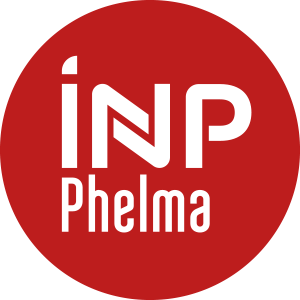Number of hours
- Lectures 18.0
- Projects 0
- Tutorials 26.0
- Internship 0
- Laboratory works 0
ECTS
ECTS 4.0
Goal(s)
Part I. Describe and quantify mass transport phenomena from a macroscopic approach. Particular attention will be given to the most common limiting cases encountered in process engineering and electrochemistry applications.
Part II. Explore the various technological solutions and application areas of heat exchange. Acquire the methods for designing processes involving heat exchange: heat exchangers and simultaneous heat and mass exchangers.
Contact Florence DRUART, Nicolas SERGENT, Lenka SVECOVA, Raphael BOICHOTContent(s)
Part I. Mass Transport
A – Fundamental Concepts
AI – Concept of flux and volume balance.
Analogy between heat flux and mass flux. Special case of steady-state regimes.
AII – Decomposition of a mass flux into three contributions:
Diffusion, migration, convection (natural and forced). Link with non-equilibrium thermodynamics: gradient of chemical potential. Nernst-Einstein law (relation between migration and diffusion).
AIII – Orders of magnitude and main experimental techniques
for determining diffusion coefficients, electrical mobilities, and fluid velocities in various media (solids, liquids, and gases).
B – Some Important Specific Cases
BI – Fick’s law.
Examples of concentration profiles (steady and transient) under various boundary conditions and geometries.
BII – Ohm’s law.
Primary current distribution in a conducting system. Applications for different geometries.
BIII – Film theory / Nernst model.
Principles linking with hydrodynamics (Levich, Sherwood, etc.). Double film model.
BIV – Convective diffusion with chemical reaction:
Concrete examples (Hatta number, enhancement factor, etc.).
C – More Complex Examples
CI – Multicomponent media (e.g., gas mixtures or solutions).
Transition from an ideal to a real system; possibility of multicomponent diffusion, Maxwell-Stefan model.
CII – Multiphase media (e.g., porous media).
Concept of effective diffusion coefficients.
CIII – Possible coupling between heat and mass transport.
Part II. Heat Exchangers
1. Heat Balance and Design
Thermal resistances
Local and global energy balances
Definition and calculation of the Log Mean Temperature Difference (LMTD)
Calculation of effectiveness, efficiencies, and Number of Transfer Units (NTU)
Use of design charts (nomograms)
2. Heat Exchanger Technologies
Shell and tube / Tube bundle – Plate heat exchangers – Heat pipes
Advantages and disadvantages of different exchanger types / Application examples
3. Heat Exchange with Phase Change
Phenomenology of boiling heat transfer
Useful correlations and design methods
Heat exchange with condensation
Prerequisites
Integral transforms, differential calculus, fundamentals of heat transfer.
Written Exam (3 hours)
All documents and calculation tools allowed
Trambouze, Euzen : Les réacteurs chimiques
Wauquier, Euzen, Trambouze, Les réacteurs chimiques, recueil d’exercices
Incropera, DeWitt: Fundamentals of Heat and Mass Transfer
Bejan, Kraus : Heat Transfer Handbook
Bird, Stewart, Lightfoot : Transport Phenomena
Taylor, Krishna : Multicomponent Mass Transfer
Perry, Chilton : Chemical Engineers’ Handbook
Poling, Prausnitz, O’Connel : Properties of gases and liquids
Treybal : Mass Transfer Operations
Benitez : Mass Transfer Operations
NASA Technical Report R132



